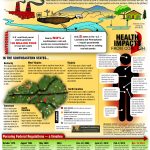
For decades, residents of Appalachia have struggled with poor health and disproportionate rates of chronic disease. In the face of these challenges, efforts to bring medical care to those in need and foster healthier communities are growing.

For decades, residents of Appalachia have struggled with poor health and disproportionate rates of chronic disease. In the face of these challenges, efforts to bring medical care to those in need and foster healthier communities are growing.
 New York’s debate over whether or not to allow fracking came to a close today when Gov. Andrew Cuomo sided with the state’s top public health and environmental officials in calling for a ban on the practice. The announcement was exceptional for the much-needed truth it inserts into the fracking fight that could, just maybe, help other states come to their senses.
New York’s debate over whether or not to allow fracking came to a close today when Gov. Andrew Cuomo sided with the state’s top public health and environmental officials in calling for a ban on the practice. The announcement was exceptional for the much-needed truth it inserts into the fracking fight that could, just maybe, help other states come to their senses.
 As the U.S. Environmental Protection Agency puts the final touches on the first-ever federal regulation of coal ash, North Carolina’s response to the Dan River spill is still hotly contested and new controversies about the best ways to clean up coal ash are beginning to emerge.
As the U.S. Environmental Protection Agency puts the final touches on the first-ever federal regulation of coal ash, North Carolina’s response to the Dan River spill is still hotly contested and new controversies about the best ways to clean up coal ash are beginning to emerge.
 Whether you’re two days or 20 years deep in environmental or social justice organizing, we all ask ourselves the same question day in and day out: why do I care? Rhiannon Fionn, creator of Coal Ash Chronicles, brings the “Why I Care” video series to the social media scene in the spirit of story-sharing, collaboration, power building and advocacy. Watch a few videos and share your own story.
Whether you’re two days or 20 years deep in environmental or social justice organizing, we all ask ourselves the same question day in and day out: why do I care? Rhiannon Fionn, creator of Coal Ash Chronicles, brings the “Why I Care” video series to the social media scene in the spirit of story-sharing, collaboration, power building and advocacy. Watch a few videos and share your own story.

More than two dozen environmental and social justice groups came together in Raleigh last week to hand deliver 59,500 petition signatures to North Carolina Governor Pat McCrory, calling on elected officials to reinstate the ban on fracking in the state. Clearly, thousands of North Carolinians don’t want to see fracking in North Carolina, the question is: are our elected officials listening to us?

The body of research linking mountaintop removal mining to lung cancer just got a whole lot stronger. Using dust samples collected in communities near mountaintop removal mines, a new study conducted by West Virginia University researchers found a direct link between air pollution and tumor growth.
In both West Virginia and Kentucky this year, federal courts have ruled against groups that believe scientific research into the impacts of mountaintop removal coal mining on health should be considered by the agencies in charge of issuing permits.

Caroline Armijo began an environmental justice art project after seeing many friends and family die from cancer in her North Carolina community, near one of the state’s largest coal ash impoundments. In this excerpt from her website, she describes the circumstances that shaped her paper sculpture creation, titled “Gray Matter.”

Coal ash — the byproduct of burning coal for electricity — is currently less regulated than regular household garbage. Filled with heavy metals, coal ash is proven to contaminate groundwater and pollute communities with dust.
 Approximately 100 students from Appalachian State University in Boone, N.C., traveled to New York for the People’s Climate March. They joined thousands of other students and passionate youth from across the country who are eager to roll up their sleeves and build a better future. In this post, Maggie Cozens, an Appalachian Voices intern, shares her perspective after participating in the march.
Approximately 100 students from Appalachian State University in Boone, N.C., traveled to New York for the People’s Climate March. They joined thousands of other students and passionate youth from across the country who are eager to roll up their sleeves and build a better future. In this post, Maggie Cozens, an Appalachian Voices intern, shares her perspective after participating in the march.